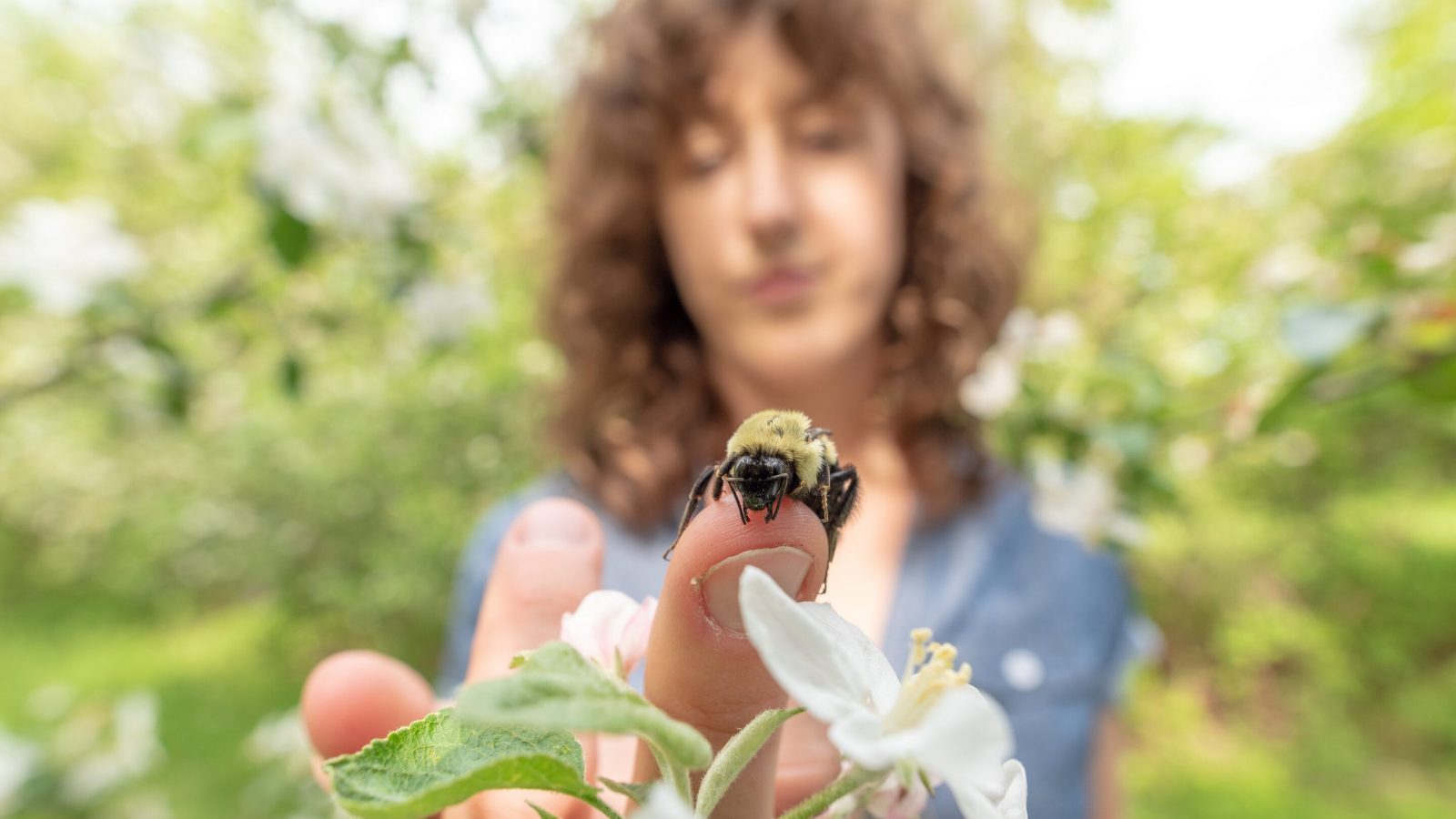Those honeybees you’ve been fretting over are getting native bumblebees sick.
A new study shows that viruses infecting domestic honeybees are spreading to wild bee species. This is potentially a much bigger conservation disaster than the better-known honeybee die-off because the lonely native pollinators are quietly dwindling toward extinction. Several species of pollinators have been listed as threatened or endangered. Some have not been spotted for years. Others may have winked out of existence without anyone noticing.
Meanwhile, honeybees have an industry breeding new hives and researching solutions to support them.
“The honeybee is a livestock animal,” said Samantha Alger, a University of Vermont grad student and lead author of the new paper published in PLOS One. “Being concerned about pollinator conservation and using the honeybee as your iconic image is about as logical as being concerned about bird conservation and using the chicken as your iconic image.”
Wild bees contribute something on the order of $4 billion dollars a year to the United States by providing free pollination services. And bumblebees have a unique talent for shaking pollen out of tomatoes and squash flowers in a way that improves yields. That’s a key to feeding more people without plowing under more wild habitat.
It’s true that honeybees have had it rough recently. They are plagued by swarms of bloodsucking parasites named Varroa destructor, which pass diseases from one bee to the next. Add in the stress of being transported around the country on flatbed trucks and absorbing traces of pesticides, and you can start to see why tons of honeybees are dying.
But we haven’t devoted as much research and public attention to all the wild bees that are much more likely than honey bees to go extinct. And Alger’s research suggests that honeybees are part of the problem. Her team found that they were leaving behind viruses on flowers, where they could infect wild bumblebees.
“We thought finding these viruses was going to be like finding a needle in a haystack,” Alger said, “but we found them in 19 percent of the flowers near apiaries.”
Alger says wild bees are important pollinators of our food crops as well as flowers. And of course, these species have real value even if they don’t help us grow food or produce pretty flowers. Perhaps we’ve gotten things backward by focusing on honeybees and ignoring the rest. But, in a twist, this new evidence suggests that to save wild bumblebees we may need to cure the honeybees.



